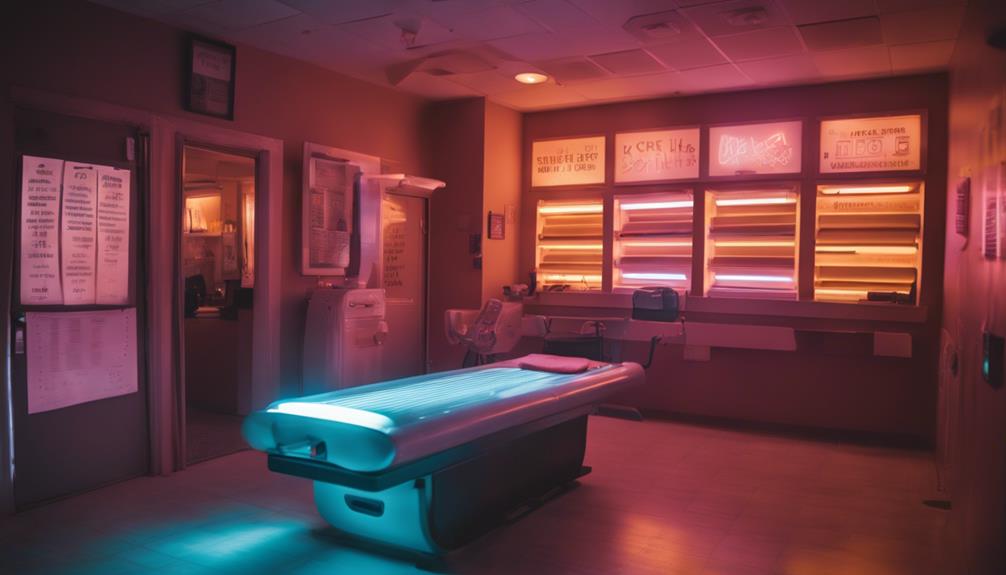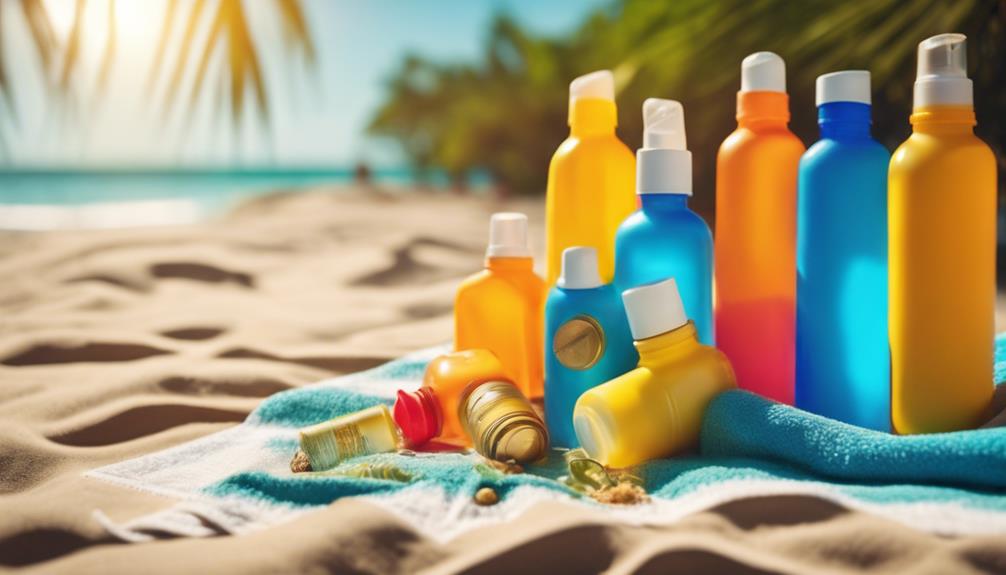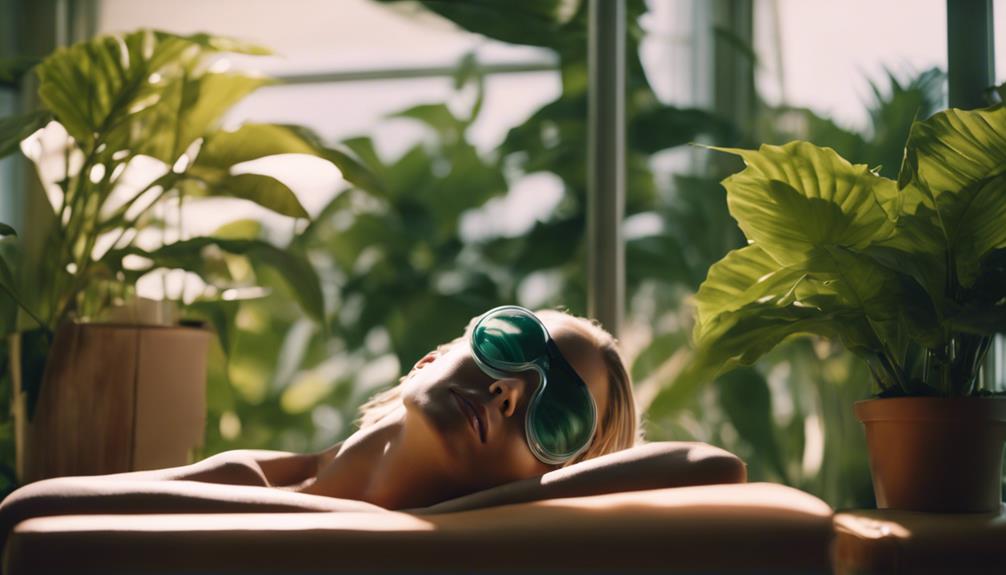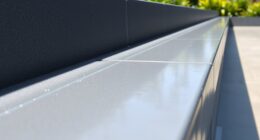Your selection of a tanning bed could pose a potential risk to your skin health. Tanning beds emit concentrated UV radiation, which can increase the likelihood of developing skin cancer, especially melanoma. Additionally, they may lead to premature aging and various skin conditions. With different types of tanning beds available, such as horizontal beds and vertical booths, it is important to fully understand your options. Remember to follow safe tanning practices, including wearing protective eyewear and applying sunscreen, even when tanning indoors. Your tanning habits are significant; considering these factors will help you make an informed decision. Learn more about the consequences of your choices and how to effectively protect your skin.
Key Takeaways
- Tanning beds, especially high-pressure types, still pose significant risks for skin cancer and premature aging despite their reduced burning risk.
- Horizontal beds provide an even tan, while vertical booths cater to quick tanning; both come with inherent health risks.
- Always use protective eyewear and limit session duration to minimize UV exposure and skin damage.
- Be aware of local regulations; minors may be prohibited from using tanning beds, highlighting safety concerns.
Health Risks of Tanning Beds
Tanning beds considerably increase your risk of skin cancer and other serious skin issues. When you expose your skin to concentrated UV radiation, you heighten the chances of developing melanoma, especially with frequent use.
The damage isn't just immediate; long-term reliance on tanning beds can lead to premature aging, wrinkles, and various skin conditions. You might think you're achieving a desirable tan, but the harmful effects far outweigh any temporary aesthetic benefits.
It's essential to prioritize your skin health over a fleeting glow. Remember, youthful skin preservation relies on avoiding these harmful practices. If you're considering tanning, think twice and weigh the risks against the potential consequences to your overall health.
Types of Tanning Beds
Understanding the different types of tanning beds can help you make informed choices about your tanning experience while being aware of the associated risks.
There are two main types: horizontal beds and vertical booths.
Horizontal beds provide an even tan with bulbs positioned above and below you, allowing you to lie down comfortably. In contrast, vertical tanning booths let you stand for a quicker, all-around tan.
Additionally, high-pressure tanning beds emit more UVA rays, which may reduce your risk of burning. Each type offers unique benefits tailored to different preferences, so consider what fits your needs best.
Safe Tanning Practices

To enjoy a safer tanning experience, always follow proper practices that prioritize your skin's health.
First, use protective eyewear to shield your eyes from harmful UV rays.
Shower off any lotions or makeup before tanning to guarantee an even tan.
Limit your tanning sessions to reduce overall UV exposure; there's no safe number of sessions.
Always apply sunscreen, even when using a tanning bed, as it helps minimize skin damage.
Avoid peak sun hours for outdoor tanning, and listen to your skin—if you notice any irritation, take a break.
Remember, smart tanning practices can help you maintain skin health while achieving the tan you desire.
Prioritize safety over instant results.
Tanning Bed Etiquette
When using a tanning bed, it's essential to follow proper etiquette to guarantee a respectful and hygienic environment for everyone. Start by cleaning the bed after each use; this makes certain the next person enjoys a fresh experience. Always wear protective eyewear to shield your eyes from harmful UV rays. Shower off any lotions or makeup before tanning, promoting an even tan. Avoid sharing personal items, keeping the space sanitary.
| Do's | Don'ts |
|---|---|
| Clean the bed after use | Leave your belongings behind |
| Use protective eyewear | Skip the shower before tanning |
| Stick to your time slot | Overstay your session |
Post-Tanning Skin Care

After tanning, keeping your skin well-hydrated is essential for maintaining that glowing appearance and preventing irritation.
Follow these post-tanning skin care tips to guarantee your skin stays healthy and vibrant:
- Moisturize daily with a rich lotion or cream to lock in hydration.
- Use aloe vera gel to soothe any redness or discomfort.
- Drink plenty of water to keep your skin hydrated from the inside out.
- Apply a gentle after-sun lotion before bed to promote recovery and avoid irritation.
Choosing the Right Bronzer
Choosing the right bronzer can enhance your tan and complement your skin tone, making it important to select products that deliver a natural glow without streaks.
Start by identifying your skin tone—whether it's warm, cool, or neutral—and choose a bronzer that matches. Look for lotions with moisturizing ingredients to keep your skin hydrated.
Test bronzers on a small area first to verify you like the color and texture. Avoid products that promise instant results, as they may lead to uneven application.
Remember, bronzers won't replace sunscreen, so always apply SPF before tanning.
With the right bronzer, you'll achieve a beautiful, sun-kissed look without the risk of looking orange or streaky. Happy tanning!
Legal Regulations on Tanning Beds

What legal regulations govern the use of tanning beds, especially for minors, due to the associated health risks? Many regions have strict laws in place to protect young individuals, recognizing the heightened danger of skin cancer linked to UV exposure.
Here's what you should know:
- Tanning beds are often illegal for minors in numerous areas.
- Regulations may require parental consent for older teens.
- Some states mandate warnings about skin cancer risks.
- Operators must inform customers about safe usage practices.
Understanding these laws helps guarantee you make informed decisions, prioritizing safety over tanning desires.
Always check local regulations before using tanning beds, especially if you're under 18.
Frequently Asked Questions
How Can I Reduce the Smell of Tanning Bed Lotions?
To reduce the smell of tanning bed lotions, try applying a scented moisturizer afterward, use products labeled as fragrance-free, or opt for lighter lotions. Also, guarantee proper ventilation in the tanning area to help dissipate odors.
What Should I Do if I Experience a Burn From a Tanning Bed?
If you experience a burn from a tanning bed, cool the area with aloe vera or cold compresses, stay hydrated, and avoid further tanning. If severe, seek medical advice for proper treatment and care.
Can I Use Tanning Beds While Pregnant or Breastfeeding?
Studies show that using tanning beds increases melanoma risk by 75% for those under 35. During pregnancy or breastfeeding, it's best to avoid tanning beds, prioritizing your skin's health and your baby's safety instead.
Are There Any Age Restrictions for Using Tanning Beds?
Yes, there are age restrictions for using tanning beds. Many regions prohibit minors from tanning bed use due to health risks. It's essential to check local laws and prioritize skin health over tanning desires.
How Often Should I Clean My Tanning Bed?
You should clean your tanning bed after every use; studies show that proper hygiene can reduce bacterial presence by over 90%. Keeping it clean guarantees a safe and enjoyable experience for everyone involved.
What are the potential risks associated with using tanning beds?
Using tanning beds can expose you to tanning bed UV risks and safety hazards, including an increased risk of skin cancer, premature aging, and eye damage. Prolonged exposure to UV radiation from tanning beds can also weaken the immune system and cause sunburn. It’s important to understand and minimize these potential risks.
What are the potential risks and benefits of using a tanning bed for Vitamin D production?
Using tanning beds for vitamin d production can have potential risks such as skin cancer and premature aging. However, the benefits include the ability to regulate and maintain vitamin D levels, especially in areas with limited sun exposure. It’s crucial to weigh the risks and benefits before using tanning beds for vitamin D.
What Are the Potential Risks of Using a Tanning Bed?
Using a tanning bed can pose various tanning bed risks vital tips to bear in mind. Overexposure can lead to skin cancer and premature aging. Eye damage, like cataracts, is another risk. Always wear protective eyewear, limit sessions, and avoid tanning beds altogether if possible. It’s important to prioritize your skin’s health.
Conclusion
As you consider your tanning bed choice, remember that safety should shine brighter than a superficial glow.
The potential pitfalls of tanning beds can't be ignored, so prioritize your skin's health.
Practicing proper precautions, respecting etiquette, and choosing suitable skincare are essential steps in your tanning journey.
Be bold, be informed, and make mindful decisions that protect your skin.
After all, a radiant future is worth more than a temporary tan.
Stay savvy and safe!










